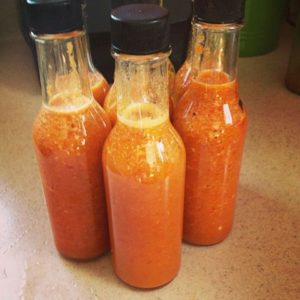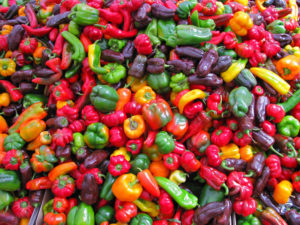-Luis Guerra-

Looking to add another ferment to your recipe book? Here is a good project to try with all those tasty peppers once the crops start coming in. As much as I love peppers on everything, sometimes there are just too many in my garden to eat before they go bad. Fermenting some of them for use in hot sauce is a great way to preserve the harvest. I really enjoy making fermented hot sauces, exploring how versatile the flavors of peppers can be.
First, start with the peppers of your choice. I like to use several varieties at one time.
Mostly sweet, and a few spicy. Start by removing the seeds and the inner membrane, then slice the peppers up however you like. I like to ferment my peppers in chunks rather than blending first and then fermenting. I’ve found this way to work better for me, but some people like to blend first. I then chop up some garlic and start prepping my fermentation tools.
Make sure to use Io Star Iodophor sanitizer to clean all your equipment, especially if it’s been sitting around since last year. I typically do not make hot sauces on a larger scale, so I end up using our 2L Fermentation Jars. I then add 5 Tablespoons of iodine-free Himalayan pink salt and mix with one cup of warm filtered water. Next I add the chopped pepper mix, and top off the jar with room-temperature filtered water.

Allowing the fermentation to proceed for at least two weeks is key. Once the fermentation starts to slow down, I drain the brine into another container. Then I place my pepper mix into a blender and blend slowly, adding the brine in small amounts until I reach the consistency I like.
I always strain some of the pulp out, and leave some in. The ratio I like best is about 50/50, but you should experiment to match your taste. After that, the hot sauce goes straight to the bottle and onto my tacos. Store the sauce in the fridge or add vinegar to help preserve it at room temperature.

Afri says
add ounce of oil dip the vunegar